
This is a series of features that focuses on games that we keep playing again and again, either over an unhealthy number of hours or those that keep getting return visits long after they first graced our systems. In this entry Arjun talks about his favourite Pokémon games.
The beginning
There's no doubt that the Pokémon brand has had a monumental impact in the world of video-games, touching thousands, if not millions of kids and adults across the globe with its revolutionary (you're going to hear that word a lot) gameplay. Talk about the understatement of the year. The emergence of Pokémon within the industry - in the form of Pokémon Red, Green, Blue, and Yellow (RGBY) for the Game Boy - was something video game fanatics hadn't seen before. Being able to catch, raise, train, and battle over 100 monsters was something unheard of, and the game and its franchise soon became one of the most popular entities of the 90s. However, as perfect as many "genwunners" (a term we're using for those who only appreciate the first generation of video games and tend to bash the sequel titles and monsters in the franchise) claim these opening entries to be, I personally believe that the games only got better - specifically in Generation II in the form of Pokémon Gold, Silver, and Crystal (GSC).
The immediately obvious
As the sub-header says, I believe that the second-generation Pokémon games are the most revolutionary and introduced the first of many things to the series. To begin with, it was the first time we saw new Pokémon - a hundred of them to be exact - and the hype and speculation surrounding these new monsters was something I'll personally never forget. It was at a perfect time where the internet was a scarce wasteland, and all we could really rely on were magazine leaks, fan-made theories and, most of all, hoaxes. There were hardly any spoilers, and it was awesome. I remember owning an unofficial Pokémon magazine containing Japanese names for the new Pokémon, and already deciding on my starter. In case you're wondering, it was "Waninoko" - or should I say Totodile! Sticking with the subject at hand, the amount of monsters to catch and train (251) is high enough to keep you entertained, even if you're used to seeing a whopping 700+ of them in today's X and Y instalments. Let's not forget the new moves these games brought to the series, thickening the catalogue of Pokémon attacks as well as heightening the depth to battle strategies.
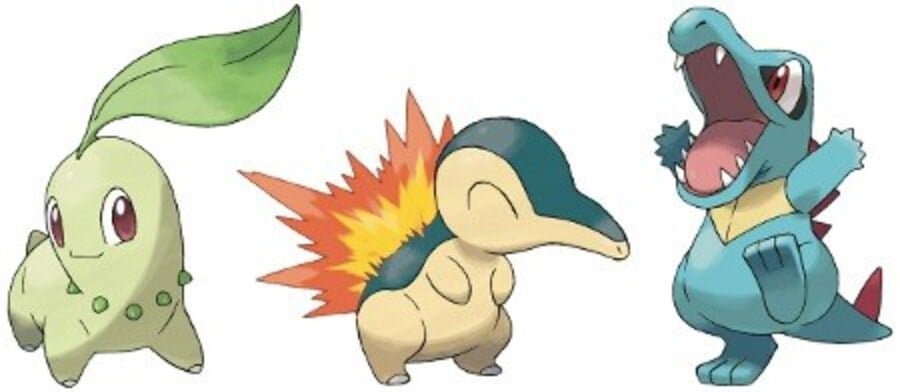
Moving on, this set of games marked the first time we saw our favourite critters in colour via the Game Boy Color - something that definitely made the game come to life. It's still beautiful to feast my eyes upon, for towns and cities aren't just painted one fluorescent colour like the previous games, and the Pokémon attacks' visual buffs really enhances the impact of moves dealt and received. Who remembers seeing a Hyper Beam or a Confuse Ray for the first time? Boy, was that the HD I was looking for back then, and even now some of the moves are graphically impressive and effective! To this day, the brightly-coloured retro look and feel holds well compared to most 3D games of the era. Upon revisiting the latter, these games don't look nearly as great as I remembered them to be, whereas there are video game developers today who purposely adopt retro art-styles identical to Pokémon GSC's for an aesthetic appeal.
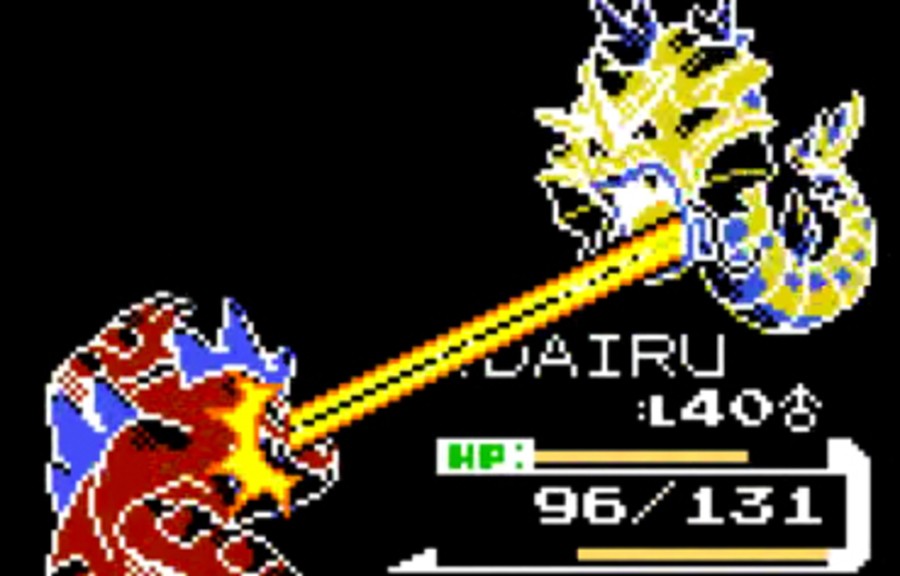
Pokémon Crystal (the third instalment to the initial Gold and Silver games) went a step further and brought both the option to play as a female for the first time, as well as animated sprites to the series. I can remember receiving Pokémon Crystal for my birthday and getting super excited to find an excuse to replay a game of Gold and Silver's calibre again. Upon starting the game and receiving my Cyndaquil, my jaw dropped as I saw its flames flare on and off. Pokémon Crystal adds even more life to an already vibrant game with this feature, making the encounters of every Pokémon for the first time incredibly fun. I'm sure I'd experience the same joy if I were to pick up these games today.
The fundamentals
Aesthetics aside, it's easy to forget that these were the first Pokémon games to introduce new types, that being Dark and Steel. Only until the most recent generation has this happened again (Generation VI's Fairy Type), and it was definitely exciting to explore what these types were strong and weak against, as well as what current and new Pokémon took on these new types. I vividly remember trying to Slash a Steelix with my Feraligatr, only to be dumbfounded as to why it read "It's not very effective...". This sense of discovery is another factor of what made these games so great, as it took the formula that players grew to learn from the previous set of games, shook them up a bit, and then delivered them back to the player via an unexpected Double Slap to their Pokémon's face. The formula was great then, and still is now.
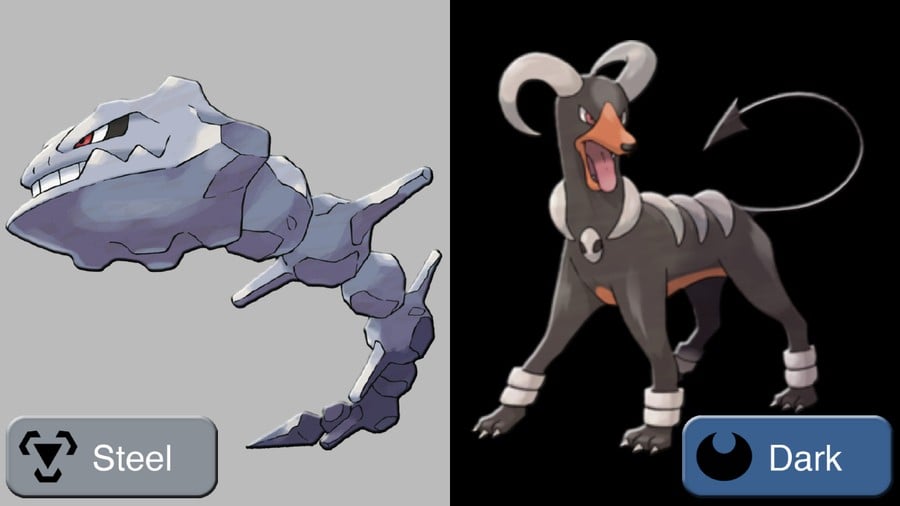
Another important factor that significantly improved the experience for a Poké-fanatic such as myself were the game's core mechanics. As you're probably aware, Generation I has its flaws. These include certain moves not working as they should do (we're looking at you, Focus Energy), Ghost-type Pokémon being practically useless, and having the Special Attack and Special Defence stat equate to one stat called Special (making Psychic-type Pokémon gods of the game). The Generation II games fixes a lot of these issues, making the game a lot more stable and balanced, and actually gives the player a decent choice of selecting Pokémon for their squad of six. In fact, I believe this is one of the top reasons as to why Pokémon GSC has much more replay value than Pokémon RGBY. RGBY provides the core framework and hits the nostalgia chords, yes, but GSC improves on this framework, plucks the nostalgia chords even harder, and then some. We still want to play a game that makes sense and not so glitch-heavy!
The mechanisms
Pokémon Gold, Silver, and Crystal also introduced a number of revolutionary concepts. To begin with, the Pokégear that you obtain during the early stages of the game is a mechanical device that would then become a staple in the forms of similar devices in future Pokémon games to come. It contains a map (meh), a phone (what?!), a radio (come again?), and the time (no way!). Yes, a game as old as this has an in-built clock that you can set at the beginning of the game. Different Pokémon and events could emerge on different days and at different times, keeping the player engaged 24 hours a day, seven days a week. I can fondly remember turning down an after-school event one Friday, just to come home and catch a Lapras as the Pokémon can only be seen in the Union Cave area on this day. If I missed my chance, I'd have had to wait until the next Friday - and there's only one per week! Let me ask you, did you ever play a game in the 90s/early 2000s that ruled/determined your week due to in-game clock-based events? Yes, admittedly I was a young boy and my responsibilities were somewhat of a stark contrast to what they are today, but still, that mechanic kept my Pokémon Silver cart warm for a very, very long time. Mechanics such as these are what keeps the video games of yesteryear timeless, while heightening their replay value all the same.
The mobile phone is also a cool quirk, as it allows you talk to other characters and learn information from them, such as when and where rare Pokémon appear. Trainers you meet and exchange numbers with can also call you to request a rematch, where they will be stronger compared to the initial battle you had with them. This is great for training up newly-caught Pokémon that you want to add to your party. Before you say it, yes; those familiar with Pokémon GSC will know that you do indeed receive extremely pointless calls too, such as Youngster Joey informing you of how him and his one Rattata are doing every minute of the day. Sigh.

Breeding, genders, held items, and shiny Pokémon are further revolutionary concepts introduced to Pokémon via GSC, and have become staples in the entire series since. However, I believe the concepts of breeding and shinies are implemented to near-perfection in these games particularly, as they can be enjoyed by both casual and veteran players. These mechanics are enough to add to the games' depth, without overwhelming players and driving them away from exploring how these mechanics work altogether. Don't get me wrong - I'm not a casual Pokémon player and I fully comprehend and appreciate the complex methods of breeding Pokémon and hunting for shinies, however I still find these mechanics in the latest games to be a little overboard and time-consuming. For me, it's all about balance and enjoyment, which I think Pokémon GSC executes to a fine degree.
The adventure
Personally, this is one of the key unique selling points for Pokémon GSC. The Johto region is often considered amongst many as the region of tradition and exploration with an eastern vibe. In my eyes, that alone sets these games apart from all other Pokémon games, for it constantly reminds you about the beauty of natural environments and does not simply rely on concrete jungles and/or futuristic elements to populate areas. On the topic of tradition, you're informed throughout your journey about legendary tales regarding certain areas and Pokémon, which motivates you to play on and discover for yourself. It makes the world feel real, historic and full of mystery - not so congested, polluted, and overly-urbanised. Sure, Kalos' vast towns and cities are nice and vibrant in Pokemon X and Y - bursting with NPCs to interact with - but to me it just feels all too crowded. While I'm not against it, I'd rather not see familiar landmarks within Pokémon games such as Lumiose City's Gym taking form of the Eiffel Tower. I can't really put my finger on it, but I guess I just like to explore unfamiliar territories and lands of the unknown. Gold, Silver, and Crystal does this well, and really sets the tone for an adventure consisting of nothing but yourself, your Pokémon, and a vast land of discovery. Personally, that's the Pokémon I grew up to know and love.
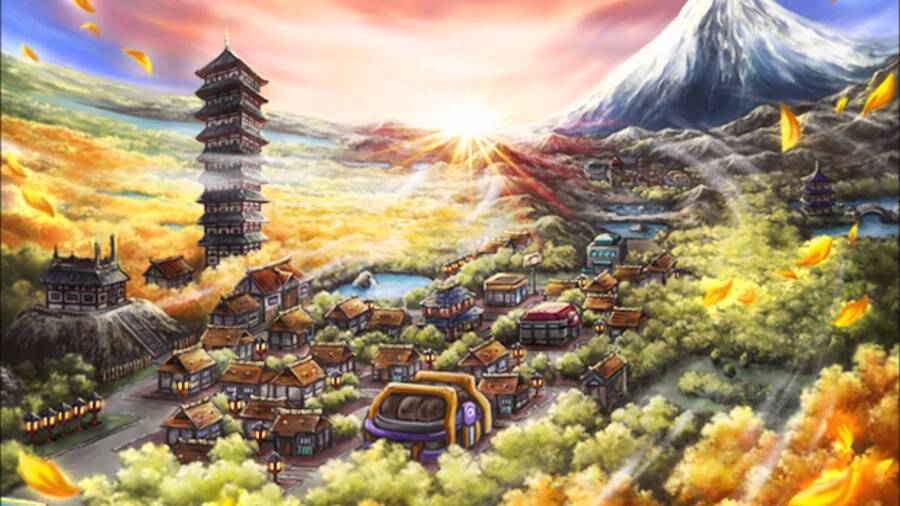
Revisiting the subject of story and mystery, Pokémon GSC's story of the three legendary beasts (Raikou, Entei, and Suicune) is an excellent addition to the games. Once you come face to face with all three for the first time, it is then up to you to find and catch each one as an extra challenge. Believe me, this is a cruel and difficult task, yet a highly addictive one that I'd still enjoy undertaking once again. The process of opening and closing your map over and over again to track down the beasts, encountering them, and then trying to put them to sleep before they flee, is an intense one. Even if you get to perform your move before each of the beasts' lightning-quick speeds AND put them to sleep successfully, catching them is a nightmare. You'll either run out of Poké Balls, Great Balls, or Ultra Balls, KO them accidentally, or they'll wake up only to flee. Nevertheless, it is an extra awesome bit of content to the games that still proves to be one - or should I say three - tough challenges even to today's difficulty standards. In addition, Pokémon Crystal's Suicune side-story is another captivating and memorable piece of content, as witnessing the beast roam the land of Johto on several occassions is an exciting watch - even if it does look like a blue and pixelated mess flying across the screen. Again, it just adds to the games' overall sense of legendary mystery.
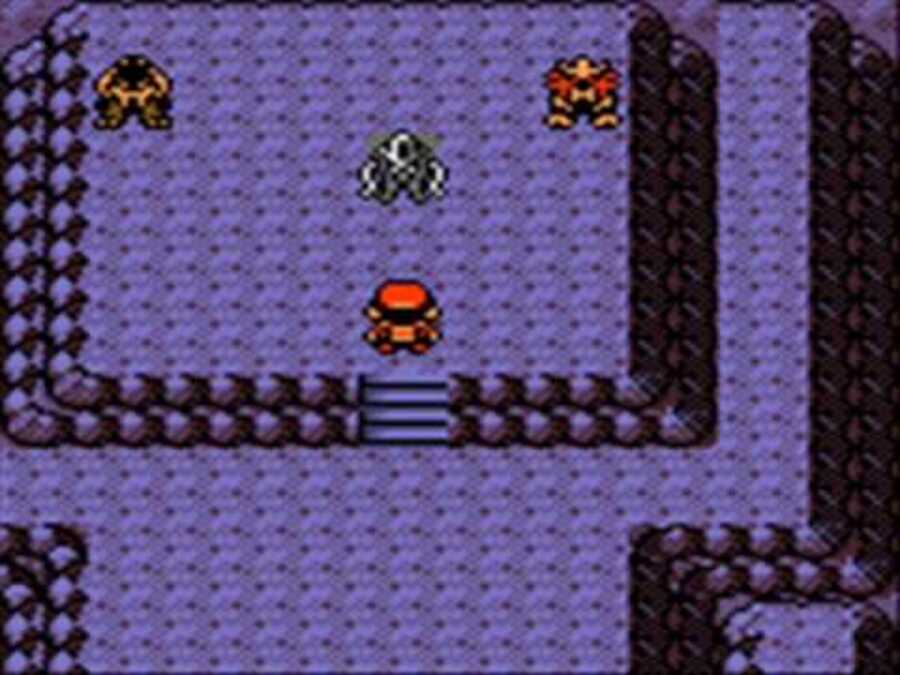
Accompanied by your adventure is some of the best on-route music you'll ever hear while playing Pokémon, in my opinion. The music in these games also helps set the tone described above. Have a YouTube of Route 42 (the HeartGold/SoulSilver remake is also great) and tell me you don't hear anything but pure adventure. At least that's what I think anyway! For a momentary split-second from time to time, I truly felt immersed in the game as if it was just my Pokémon and I, travelling through the world of Johto together against the challenges that lay ahead. That's what a large proportion of the soundtrack of these games makes me feel.
Here's one for you "genwunners". Pokémon GSC allows you to revisit the world of Kanto (the region from Pokémon Red, Green, Blue, and Yellow)! Sure, some may argue that this rendition of Kanto is somewhat sparse compared to its RGBY counterparts, but you can still collect all eight gym badges from there too - making a total of 16 gym badges to collect. You can even face Red (the protagonist of the original Pokémon games) as a final challenge, but I won't say anything more for those who haven't experienced this truly epic encounter. The soundtrack for this region is also reworked, and the areas are familiar yet dissimilar to the games' predecessors, allowing veteran players to experience a feeling of nostalgia and exploration all at the same time. What other Pokémon game has ever let you explore a previous region? It's certainly an ingenious method of extending the adventure without overwhelming fans of the series, at least in my opinion.
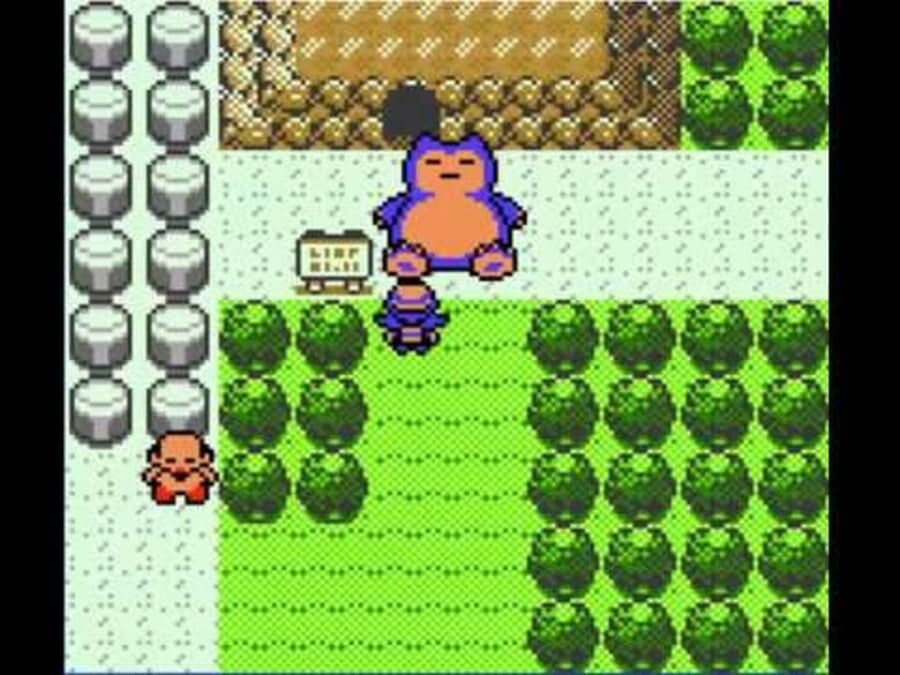
The meta-game
For me, the fact that these near-perfect Pokémon games does not have any online functionality adds to how special these games are. You're probably shaking your head right now, but hear me out! With the last three generations of Pokémon game entries, I always felt somewhat 'rushed' to get through the adventure so I could jump online. It's probably just me, but knowing that there's a world of veteran players out there to compete against and trade with, discretely dictated the choices I made throughout my adventures - which I wish I could shake off! Why would I want to waste time to raise a Pokémon that I'm fond of but sucks statistically - and will therefore not be a favourable choice in competitive play - when I could essentially kill two birds with one stone and raise a Pokémon with high stats and 'genetics' for use in my adventure as well as the meta-game? Why would I want to find a Pokémon the hard way when I could simply trade with somebody online to speed-up the process?
There was no fun in having to choose a Pokémon just because it was superior, or have the work done for you by somebody else - and for me that was all because of the temptations of online services. It's probably a stupid mental setback of mine, but for me, the lack of an online mode in a Pokémon game enhances the overall experience and adds a certain magic to the game. The feeling of finding and catching Pokémon yourself, trading with people in person, as well as being able to focus on nothing but the adventure (and being successful with your favourites) is something I miss. In summary, these games would have been very different had they had any online functionality, which is probably the reason why I didn't enjoy the remakes (Pokémon HeartGold and SoulSilver) as much as I thought I would.
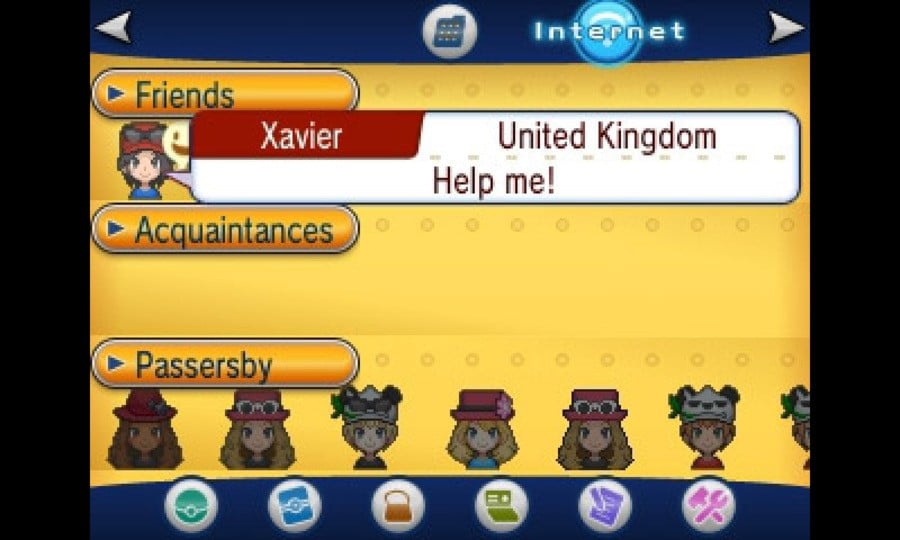
In terms of the actual game's meta-game though, admittedly there isn't much in Pokémon Gold and Silver apart from completing your Pokédex. However, Pokémon Crystal introduced the Battle Tower, consisting of areas set up specifically for Pokémon battles under special rules. Prizes can be won by winning seven battles in a row, which are by no means easy feats due to rival trainers possessing both random and tough Pokémon. The Battle Tower has since become a permanent fixture in Pokémon games, adding to the list of features that Pokémon GSC brought to the series.
The verdict
Overall, Pokémon Gold, Silver, and Crystal are games that will forever stay dear to my heart due to the amount of revolutionary concepts they threw at me as a child. These are the set of games that introduced an array of staple features in the Pokémon universe that we still see to this day, and this coupled with a compelling storyline, soundtrack, and lengthy adventure makes them some of my favourite games of all time. To top it all off, the inclusion of the Kanto region really makes this set of games a unique experience. I'd happily find an excuse to find the time to revisit these classics again - Pokémon HeartGold and SoulSilver was that excuse in 2010 but I felt that it just lacked a certain magic that the originals have. Whether you're a Pokémon fan who hasn't played these games, or someone who wants to get into the Pokémon universe but doesn't know where to start, I whole-heartedly believe that Pokémon Gold, Silver, and Crystal really sets the bar for a complete Pokémon experience - they truly fire on all cylinders.
Did you enjoy the second-generation Pokémon games? What were your favourite set of Pokémon games? Sound-off below!





Comments 51
So many great memories behind not only the originals, but also the remakes. Great article guys.
After an article praising Generation "screw past games, these are the creatures you're supposed to care about now" Three, this is a nice change of pace. I just wish I could move my old Pokémon to newer generations, a privilege that Generation III Pokémon were the first to get. Still, long live Johto!
Crystal is one of my favorite games ever. As a kid, there was so much to do, so much to discover. I had a used copy with a Lugia on it, but I wanted to earn it on my own. That red Gyarados is the only shiny I've ever seen in all my years of Pokemon (aside from online). I love this game.
@AlexSora89 I belive I read an article on NL about a guy who made possible trading gen 2 pokemon to further gens. Unsure how it works though since I read it some time ago.
To this date I'm still stuck in Gen 1 where I'm like "oh yeah I forgot about Steel/Dark" because most of them look as though they should be Rock, Fire, Psychic or Normal and I guess the wrong type.
O how I wish all three games from Gen 1 and 2 were released on wii u vc.
It would be amazing if all three games from gen 1 and 2 were released as well as both pokemon stadiums for n64.
Wow... You gave every single point as to why I believe this to be the best region in the series. I remember having an super awkward team of a Typhlosion, Executtor, Gloom (I never knew I could evolve it lol), Red Gyarados, Arcanine, and a Dewgong that I had to grind like hell for the final gym. No guides, no internet for me back then. I eventually swapped my useless Gloom for Ho-oh, leaving me with three fire types... Somehow I got all the way to Kanto, It's weird how you have so much more patience for grinding when you're younger.
Of course, Houndoom looked too cool to pass up in the post game, leaving me with FOUR fire types. No wonder I kept on blacking out...
@Dankykong I'm stuck in gen 1 as well!! I find steel / dark whatever elements confusing too Pokemon yellow is my favourite I've got ruby and y
One of my favorites, too. Isn't it a little weird, though, to call the second generation "the first Pokémon games to introduce new types," and "the first time we saw new Pokémon," when we technically got 151 new Pokémon and 15 new types in the first generation? I wouldn't call Gen 2 a first just because it's the first title that wasn't the first (read that carefully, lol). Still, I loved the color, the intro animations, the phone records, and the synced-up times of day. I remember thinking it was cool that some Pokémon only showed up in the actual evening. Red Gyarados, Ruins of Alph, the appearance of Kanto; they were all really cool when I was a kid.
Great article, truly hit the nail on the head! It's not just you, I feet the same about online modes in Pokémon games. Also - loving the Instagram page
I love Sliver, Gold and Crystal and returning to them on DS was great. My favourite gen
Gold and Silver are still my top Pokemon games of all time.
@Nicolai Haha that's a fair point, but it was the first for loads more too!
@PsychoCrusher Thanks so much - hugely appreciated!
Honestly this is my least favorite Generation. Followed closely by 4. There's nothing inherently wrong with the game, but many of the Pokemon introduced were underwhelming. Also it always felt like the journey through the Johto region was short lived. I'm sure I liked it more when I was younger, but I'm just not a fan now.
@Samuel-Flutter Really? It felt like one of the more long ones to me (as opposed to Unova, where the game just pushes you to the next place.)
Pokemon Gold was a huge part of my childhood, and I've actually been playing through it again recently!
Also, good first choice of starter — Totodile is one of my favorite Pokemon and my all time favorite starter.
Man, this was it. It was the height of Pokemon. Everything about it was better and cooler. Having new Pokemon was MIND BLOWING. The time thing was incredible. It was just more huge than I could ever say. One of the greatest and most exciting video game experiences I've ever had.
I rarely feel nostalgia for inferior versions of old games, but Crystal is my favourite game in the series byfar. In fact, I'd take any of the Gen II games as there aren't any major differences between them, and I've never really cared for Battle Tower. So tempted to hunt down a copy and a Game Boy Advance SP to play it on (a blacklightless/chargerless Game Boy Color simply won't do, as much as I adore its iconic form) but the issue of the internal battery dying has put me off.
Why play Gold when you can play Heart Gold? Heart Gold is a much better version of Gold.
I wish Gamefreak would start packing in two regions worth of content into one game again like they did with Generation 2.
@sillygostly I wouldn't worry about the battery too much (not short term anyways). I got my copy of Crystal about 3 years ago, and the battery in it still works (I'll have to check again but it was working just fine a few months ago). Now, long term, yes, I can understand being worried. Have you tried emulating it? If you have a controller and an Android or PC (or the Nvidia Shield Portable), then it's sort of like playing the actual game, somewhat. And the added benefit of not having to worry about the battery, among other things.
That Pokemon Crystal cartridge is so damn sexy! Gen II was fantastic, this makes me wanna go play these games again right now!
I appreciated the remakes of this the most. In my opinion, HG/SS were the pinnacle of the series. They kept everything great about these games and then added some on!
@mjc0961 I don't think I agree with you on a single thing you've stated, but I'd like to play to the game again to double check.
Crystal was the first that let you play as a girl, right? I wish Nintendo would release these on the 3DS VC. I don't like to play roms, but if that's all I have, well, that's all I have.
Nintendo is forcing me to become a pirate. (T-T )
I can't go back to the original Gold and Silver. I can play Red and Blue for the nostalgia of it. I've even learned about all the glitches, and caught a Mew in my last play through.
I did have a HG/SS play through going last year with my Dad and my nephew. It was great taking some 4th genners for a spin around Johto. We would battle and trade and it was so much fun. But that was the exception, not the rule. Mostly those old games feel like too much of a step backwards.
@Utena-mobile Can't you just get a Game Boy, or...?
@Aerona
or... or... a rom... ? (°◡°♡).:。
Sorry, I don't know what you're hinting at.
I wish I could get a Gameboy. I live in some weird, nowhere place next to a canyon in the Northwest. The nearest store that sells a Gameboy is almost 3 hours away.
If I can give you some advice. Never let your parents move you to some nowhere place near a canyon. But other than that, the U.S. Northwest is pretty cool.
@Utena-mobile Haha, basically what I'm saying is that Nintendo isn't "forcing you into piracy". There's always eBay.
@Aerona
hey, thanks. that's a good idea. (^_^ )
Well done. You've nailed most of the points about what make these games special and revolutionary (although you forgot to mention the hold items).
That being said, there's really no reason to play these over HeartGold/SoulSilver. You get DS graphics, access to Pokémon and attacks from later generations, mechanics from later generations like Abilities and the move-specific physical/special stat, all the acorn Pokéballs now work properly (about half of them were bugged in the original releases), you're not missing much from Crystal Version (unlike the fun features from Yellow and Emerald that were left out of their remakes), online trading and the ability to transfer to later generations, and most importantly your save battery won't die on you.
By the way, the Internet was already quite strong back in 2000. I learned about all the new Pokémon and game mechanics online, and I wouldn't want to waste time experimenting within the game itself, anyway.
EDIT: Oops, the DS online functionality has been shut down. Oh well, there's still plenty of other reasons on my list after you scratch off that one.
When combined with Stadium 2, Crystal version is EASILY the most rewarding, replayable game of all time, in any genre of game. If you own Crystal, and an N64, you owe it to yourself to get Stadium 2 (and even 1!) for experiences that certainly can't be emulated. Heck, I'm still trying to beat it 100%!
X and Y are my favorite Pokemon games outside of Red and Blue. That being said, having over 700 Pokemon is just stupid. I wish with each new generation they had just released around 10 Pokemon. Starting off with 150/1 was a great starting base. And at the time, they made it seem like that was the whole world of Pokemon aside from a few undocumented species. It would have been reasonable to add 10 new ones per generation as you helped the professors go to all corners of the earth in search of different monsters. When they dropped 100 new ones in the second generation, it was just a major turn off. I would have been happier if they had focused more heavily on story, features and mechanics. Instead every new series just felt like a remastered version of the last, instead of aa brand new sequel. Games had small mechanical updates here and there with each new version, but it wasn't enough, and it just felt stale. It was just tacked on stuff that you would expect from any rpg, like day and night cycles, and team battles. I feel like after generation one, they could have had all the features of X and Y (aside from online content) in generation 2, and a more compelling single player story. And by now, we should be in the second generation of a full blown Pokemon mmo.
@BulbasaurusRex you say this, but I had dialup until 2006. If you didn't live in a major city, the us was an internet wasteland.
Honestly, I'll probably never go back to the old Pokemon games since the series has improved in so many ways, since the Gameboy days. XY/ORAS are now far more superior to all the previous games in the series! However, Pokemon Silver will always hold a special place in my heart as the greatest handheld gaming experience when I was a kid and also as my first anticipated game (first pre-order for me)
@KTT
The only method I know of is to basically use cheat devices to view the stats and replicate them on hacked Pokemon.
There's no way to legitimately do it, Pokemon from gen I&II are missing a few newer stats.
@DarthNocturnal
IV's have always been around, they were just hidden.
@Zombie_Barioth Well, you can cheat to recreate the pokemon. The difference here is that I think the guy built up some kind if "converter" - which does the cheating for you. Yet I'm not sure because I read that quite time ago.
Generaly there is too much difference in code between 1-2 and 3rd gen games and this is why it is impossible.
Also: the IVs were always around but they were working a little bit different along with EVs (Stats Experience back then). Generally finding a pokemon with perfect "genes" back them was a quite impossible task (chances were 1:65536), which is now very simple, as of gen 6th.
@BulbasaurusRex Thanks, and a great point about the held items - there was a lot that these games introduced (I've cheekily given it a mention)!
As mentioned, as great as HG & SS are, they just don't replicate the magic that the originals do for me (I've recently played through both). And you must've been fortunate, my dial-up was awful back then and I just didn't have the knowhow about the confines of the internet as a kid!
@Daruncic Well yeah, we still had dial-up then too, but that doesn't have anything to do with the content that was available.
These still to this day are my favorites of the Pokemon series. At the time it was amazing that it not only included the new region of Johto, but also a "few years later" approach to Kanto as well. Add to that a bunch of new and interesting Pokemon, along with the new types and the amazing final confrontation between you and Trainer Red, and you've got one heck of a journey that was only made better by the DS remakes.
The only issue I have with these games is that they're incredibly easy. I mean, obviously the story mode in all Pokemon games is easy, but the way the path splits after you beat the Ecruteak Gym is bad for the game. It's nice that you can choose which gym to go to next, but it means that until after you've beaten the Seventh Gym most of trainers have Pokemon that are much lower levelled than yours.
That's a minor quibble though, and it's a testament to the enduring quality of the Pokemon series that small issues like that can mean that you like a certain game more than another.
I must've completed these games and their remakes dozens of times.
Because it's fun. Im still working my way through Crystal.
@Joshua_Hylian Yup, Johto is actually the smallest region of all, and not even by little.
@DarthNocturnal
Considering they've been around from the start and wasn't even intended to be known about (not like it is anyway), that honor should probably belong to natures.
I'm fondest to the first generation and their remakes..... I spent many a night kept warm by the glow of my game boy colours magnifying light when I was younger............ And in reference to the internet nowadays, I can't stand it, it ruins many a great rumour. I couldn't imagine a childhood where the playground isn't rife with console/gaming rumours and speculation. Nowadays you can just Google a specific claim to find out whether it's a lie or not, but it was them lies that kept us all dreaming.
You know what really grinds my gear?
Only having one trans-regional Pokémon game.
Pokémon Gold/Silver/Crystal (and by extension, their remakes HeartGold/SoulSilver) set this terrific standard of having the protagonist cross region boundaries!
Of course, this will be difficult to further implement. The last two main-regions were staged in distinct continents. Nevertheless, to have players walk through the fields of Kanto, then soar through the skies and land in Sinnoh or Unova; just think of all the cool entanglements and possibilities! I can't wait to see what revolution Pokémon goes through next! Here's to 2016 and the realm of Pokémon!
@DarthNocturnal
I get all that, my point was we weren't really supposed to have it in the first place, IV's weren't meant to be messed with so that's something you can thank the fanbase for. The fanbase is basically doing the exact opposite of what they're intended for, which is to keep stats varied. Its part of how the games generate Pokemon.
They can't really do anything about it now without ditching previous games' Pokemon like gen 3 did, which obviously would likely be a deathblow to the series.
Fufufu... I am playing Pokemon Silver while I read this article!
Seriously, I remember the Joy I got getting hype over the new 100 Pokemon and the new types, them ending up stimulating the imagination of mine. (I even thought that, if I figured out what the entire Annon alphabet meant, I would be a Pokemon Master!) The hype was quite early; my earliest memory of Pokemon was me seeing the Farfetch'd microanimation from the VCR of Pokemon: the 1st Movie at ToysЯUs, hence I got into the series at the border between the generations. (Right now, though, the Pokemon from Generation 2 felt different... not the same Joy I got from the previous generation... Is this the '1st love' effect?)
Yes; I got figurative nosebleeds (and some Fear and Surprise) from the Hyper Beam animation. Speaking of animations, I remember thinking that the way the games would upgrade the graphics would be having trainers get animations. (Back then, I found difficult that the graphics could get any better; Pokemon Ruby and Sapphire being quite some time away.)
I also felt excitement from the new Types... though this started the 'Light Type' controversy... (Myself, alongside Light, I thought that Nintendo- would make a Rainbow Type because the Rainbow Energy had its own symbol in the TCG back then!)
I heartily agree with how Gold and Silver improved upon Red and Blue. I remember not playing the first-generation games much, me starting on Pokemon Silver. After playing Pokemon Red in its entirety this year, an experience that I expected to be pure Joy was, in reality, mixed with Disgust and Anger. The moves, while plentiful, were still too small in number per type. I mean, I felt that there were too little POKEMON per type, Dragon types notwithstanding! Also, the general interface felt so uncomfortable. While Pokemon Silver had its own flaws (Fury Cutter being the closest to a decent Bug move!), the game was so much better than the previous generation.
I reiterate the time thing. Back then, I did not have a wristwatch nor those fancy cellular telephones from back then (which were less advanced than those from Nippon, not that I, a youngster at the time, was appropriate with one), hence my Pokemon Silver game WAS my 'wristwatch!' I did appreciate the time features... though there were a few moments of Anger that resulted from them... Also, I actually enjoyed the telephone calls... though I do not recall Youngster Joey from being that annoying...
The exploration (of both regions)... that had Joy, location-wise and music-wise. I even enjoyed the Generation 2 remixes better than the Generation 1 originals! (I do not deny the points of Anger from the HM obstacles, though...) The chasing Legendary Beasts was Disgust leading into the Sadness of resignation that I would never catch those beasts, though...
Do we not remember Karen's words from this generation... about playing with your favourites? (Back then' I did not understand what she meant.) Nowdays, in the remixes of the Generation 3 games, a gentleman talks about how we trainers eventually have to pick function above all else in Pokemon. I wonder about that zeitgeist...
Gen 2 has always been by favourite Gen, despite the third generation holding a special place in my heart.
It was the only Generation that seemed to implement the day and night cycle properly. The time and date truly felt like it affected which Pokémon came out and the events that happened.
Unfortunately that very same clock feature is why my cartidge's internal battery is dead...
I remember I was like 10 when I beat Gold.
Then I started bragging at school, saying I caught Tyrannitar and a bunch of legendaries, and even defeated Red. One of my classmates heard me and proposed we do a temporary trade, my Gold for his Crystal, just so he can see how far I'd gotten... We did the trade, but I regret it now because he never re-traded the games and I got stuck with his lame Crystal cartridge with his character only having 5 badges -_-
Since then, I've never gone back to GSC T_T
Show Comments
Leave A Comment
Hold on there, you need to login to post a comment...